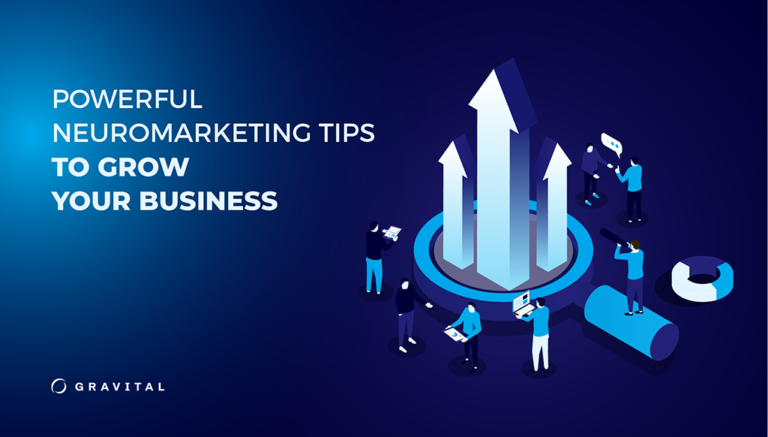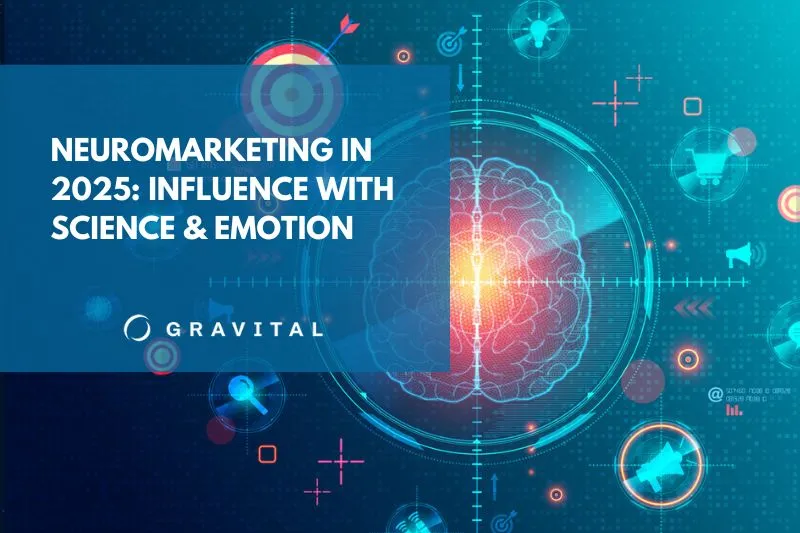The battle for customer attention, engagement and loyalty has never been fiercer. Today’s consumers are besieged by countless messages, coming at them 24/7 via a variety of media, including multiple digital platforms. To survive and thrive, brands need to adopt innovative strategies that go beyond demographics, interests and preferences. Understanding your target audience is the key.
You may think you know, even understand your customers. But do you, really? Are you clear on the “why” behind their purchasing decisions? If you’re not tapping into their primal desires, emotional responses and subconscious drives, you’re not truly understanding their purchasing behavior and decision-making.
This is where neuromarketing steps in, providing a powerful lens to delve into the intricate workings of the human brain and unlock the secrets of consumer behavior. Neuromarketing offers a unique avenue for brands to understand and influence consumer behavior at a deeper level.
Where Neuroscience Meets Marketing
Neuromarketing is the application of neuroscience to marketing. It studies how consumers’ brains respond to marketing stimuli and uses this knowledge to improve marketing strategies. By understanding the underlying neural processes that guide consumer decisions, subconscious motivations and emotional response, brands can create more effective marketing campaigns.
Unlike traditional market research, which typically relies on self-reported data, neuromarketing bypasses conscious biases and reveals the unconscious drivers of consumer behavior. It relies on technologies and techniques, such as functional magnetic resonance imaging (fMRI), electroencephalography (EEG), eye-tracking and facial coding,to capture the unfiltered responses of consumers, unveiling the hidden truths about what truly compels them to connect, engage, make a purchase and, ultimately, become loyal brand advocates.
READ ALSO: Neuromarketing: Discover and Give Customers What They Really Want
How to Use Neuromarketing for Business Growth
How can this knowledge translate into tangible growth for your business? Here are 14 tips to help you wield the power of neuromarketing across your marketing campaigns.
1. Select Images Strategically
Use eye-tracking and brain imaging technologies to determine which images in your ads capture attention and evoke the desired emotional response. For example, faces, particularly babies’ faces, trigger stronger emotional responses and hold attention longer. Tailoring imagery based on neuromarketing insights can significantly increase engagement and conversion rates.
2. Use Color Psychology
Colors influence perception and have a profound psychological impact. Warm colors such as red, orange and yellow energize and stimulate, while cool tones like blue, green and purple convey trust, freshness and tranquility. Align your color palette with your brand personality and desired emotional response.


3. Keep Tabs on the Emotional Undercurrent
Analyze customer sentiment across reviews and social media interactions to identify pain points and tailor your messaging accordingly.
4. Capitalize on Their FOMO
The fear of missing out helps explain why scarcity and limited-time offers trigger urgency in decision-making. Implement these insights to craft messages that create a sense of urgency and exclusivity through limited-time offers that encourage consumers to act immediately.
5. Let Others Do the Talking
Neuromarketing research shows that social proof can significantly influence purchasing decisions by building trust and credibility. Testimonials, reviews and ratings add a powerful layer of validation that encourages purchases.
6. Persuade Them With Your Packaging
The design and tactile feel of product packaging can influence purchasing decisions. Use packaging that showcases your brand identity, triggers positive emotions, and influences your target audience on a subconscious level. Consider elements like touch, unique shapes and subtle scents to create a lasting impression.
7. Boost Their Egos
Neuromarketing can identify the values and identities that resonate most with your target audience. You can then tailor your messaging to affirm the consumer’s self-image or aspirations and make them feel valued and important whenever they interact with your brand. Tactics such as addressing customers by name, personalized product recommendations and exclusive deals foster loyalty and engagement.
Status symbols, or brands that are associated with success, exclusivity, wealth or aspirational values, tap into the human desire for belonging and social standing.
8. Tackle Decision Paralysis
Too many choices can lead to decision paralysis. Simplify the decision-making process for your customers. Offer limited but curated choices to avoid overwhelming them. Neuromarketing can help identify how many options to offer and how to present them to ease decision-making and boost sales. Consider offering free trials and samples to let them experience your brand firsthand.
9. Leverage Loss Aversion
People tend to prefer avoiding losses over acquiring equivalent gains. Use this principle in your marketing strategies to highlight what consumers might lose by not choosing your product or service.
10. Overcome Status Quo Bias
Disrupt the comfort-zone bias. Show consumers the clear benefits and improvements your product offers over existing alternatives. Encourage them to break free from routine by highlighting the benefits of embracing change and trying something new.


11. Use Expert Endorsements and Testimonials
Get endorsements from respected figures in your industry. Partner with thought leaders or influencers who resonate with your target audience to add a layer of credibility and trust to your brand. Feature positive feedback from satisfied customers. Seeing real people’s experiences adds a layer of authenticity and persuasiveness.
12. Set the Right Prices
Use neuromarketing insights to determine pricing strategies that appeal to your consumers’ sense of value and fairness. Anchor prices strategically to influence perceived value, and use tactics such as odd-numbered pricing (e.g., $9.99) to tap into subconscious biases and make your offerings appear more attractive.
13. Be a Little Sentimental
Align your brand messages with the emotional sentiment that speaks to your target audience. Positive emotions trigger reward pathways in the brain, making your brand more appealing. It’s therefore no surprise that most audiences respond well to joy, hope and excitement. In addition, create compelling narratives that connect with your audience on an emotional level. Stories activate the brain’s empathy centers, forging deeper brand connections.
14. Take Advantage of the Anchoring Effect
People rarely take the time to learn the full facts before taking action. Instead, they unconsciously latch onto the first fact they hear, basing their decision-making on that fact, whether it’s accurate or not. This phenomenon is called anchoring. The anchoring effect, in a nutshell, means that first impressions matter–a lot.
Final Words
Neuromarketing offers a goldmine of insights for brands aiming to deepen their understanding of consumer behavior and refine their marketing strategies. By implementing neuromarketing techniques, brands can create more compelling, effective marketing campaigns that resonate with audiences on a deeper psychological level, driving sales and business growth.
Are you ready to take your brand to the next level with neuromarketing? Talk to us.


